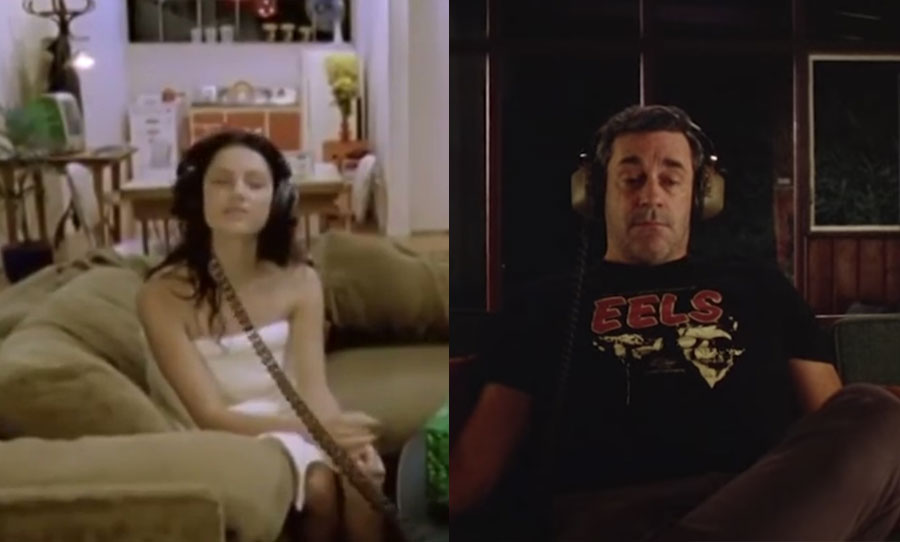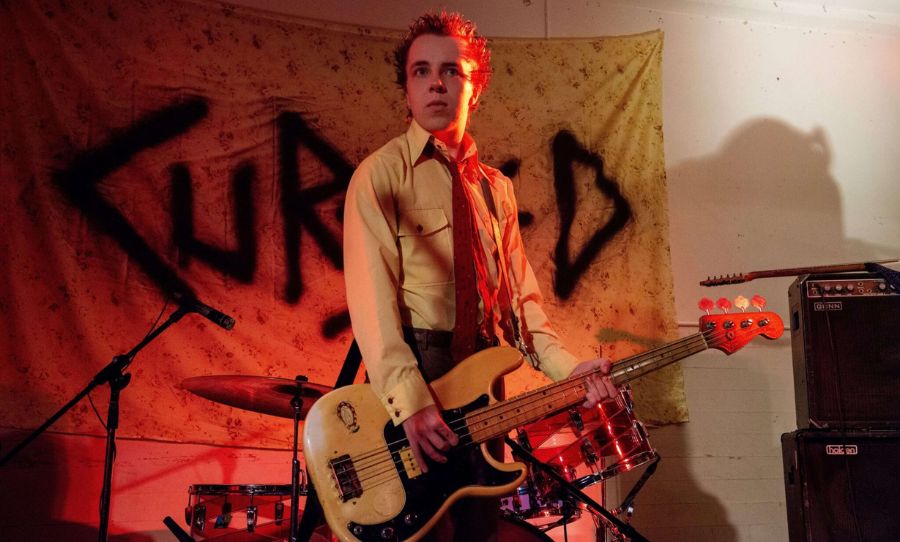Does New Zealand being on the other side of the world grant you plausible deniability in cases of creative plagiarism?
You don’t have to be a fan of iconic New Zealand band Goodshirt to raise an eyebrow to the latest video from the Eels, a five-piece from California. In concept the official clip for Are We Alright Again is practically identical to Sophie, which Goodshirt released back in 2002.
The song, helped in no small part by the wonderful clip, was a national hit. It reached number one on the Kiwi charts, enjoyed some significant airtime on MTV, and eventually won Best Music Video at the New Zealand Music Awards. I’ve met more than one New Zealander who calls Sophie “a national treasure”.
In simpler terms, it’s the exact kind of video you shouldn’t be plagiarising.
It was hardly a run-of-the-mill day for Goodshirt member Gareth Thomas when Are We Alright Again was released. He’s long been a fan of the Eels, and seeing the video was mind-blowing, he told us.
“On Thursday I noticed John Hamm’s face in my social feeds strangely regularly,” Thomas shared, “then noticed it was about a new Eels track, then I realised that the accompanying comments were about my song.”
“I clicked and watched. It pretty much blew my mind! In the spin I wondered ‘why has one of my favourite bands made a homage video to Sophie?'”
Eels have since responded to the claim, taking an angle of deniability and pushing any blame towards Are We Alright Again director Greg Barnes. Which, in the case of a music video, is understandable.
Check out the band’s full statement below:
“It’s been brought to our attention that our new video for the song ‘Are We Alright Again’ is eerily similar to one made by the New Zealand band Goodshirt. We were not familiar with the band or their video. It seems to be purely coincidental. Director Greg Barnes explains the origin of his concept:”
“It wasn’t a burglary to begin with; I wanted the protagonist to wear headphones and to make some toast, and put a pot on the stove, play the track and completely forget the world around him – then – in the background the toast would set fire, the pot would bubble over and the entire kitchen would burn and break behind him. After talking with the production designers they told me that was way beyond our budget. Then, in an email conversation with my producer, I came up with the idea that it would be so much cheaper to turn it into a burglary – where items needn’t be destroyed but instead simply removed.”
“My sincere apologies to Goodshirt for the similarities. It’s a crazy coincidence that we ended up with something so similar. The nice thing about this being called to our attention is now I know the band Goodshirt. They’re awesome. Check them out.”
“I agree with E when he said it is eerily similar, it’s a little too uncanny”, Thomas said, in reaction to the lengthy statement.
“I’ve got no qualms with Eels though, I believe E was totally unaware and innocent, though his video team less so. We love the Eels, I hope someone in his video team isn’t being shady. Maybe they’ve forgotten that they’ve seen our video and done a subconscious George Harrison My Sweet Lord.”
Take what you will from Barnes’ statement – to me it seems a little like the kind of over-reaching excuse you drum up to explain why you missed dinner with your parents. If Barnes did steal the idea, it’s quite a long way of saying: “I saw this great video from Middle Earth, so I got John Hamm to do the exact same thing for a much bigger band in America – you know, the real world.”
This isn’t the first case of an established American star taking visual cues from a beloved New Zealand name, either. It’s not even the first time it may have happened to Goodshirt. As per Gareth Thomas again:
“Here’s a fun fact. Back in the day, our record company (EMI) told us they showed our label mates Coldplay our Blowing Dirt video (where Rodney sings and walks in reverse while we smash up a car). Apparently they guys from Coldplay loved it and were asking all about how it was made.”
“A year later Coldplay came out with their own version of a reverse video for The Scientist. A different theme but a very similar concept. We’ve often wondered if we helped to inspire their video, cos the timing definitely checks out.”
Though other examples are sure to exist, one that received substantial publicity came following St. Vincent’s performance at Coachella 2018.
While the artist herself was garbed in a latex suit, her band members were dressed in monochrome, with fabric suits covering their bodies, mod-style wigs on their heads, and what seemed to be plastic masks underneath the white fabric.
New Zealand artist Princess Chelsea was quick to call St. Vincent out on Facebook, pointing out the similarities between their get-ups and the aesthetic her collaborator Jonathan Bree had been cultivating since 2014. After a casual glance at any of Bree’s videos and the Coachella performance (the official videos have actually been taken down), it’s easy to see where the accusation came from.
In this case, St. Vincent never responded to the claim, likely because Bree never pushed his case. “I don’t want to get involved in this shit”, he told Princess Chelsea.
Music itself is cyclical and derivative – artists have been copying one another since forever. Borrowed inspiration, in small increments, is what eventually resolves into new genres and ideas. But ever since the other side of the world became one click away, it’s increasingly likely you’ll get called out when that inspiration is a little thin – as St. Vincent and the Eels have both found out.
Per capita, New Zealand produces some of the most interesting music in all the world. Their relatively small population of five million pulls far above its weight, and it’s a rare moment that you won’t find a Kiwi floating amongst music’s one percenters.
New Zealand’s music community is vividly creative, but despite these success stories, it can be insular. Like any country’s music scene, the vast majority of artists don’t make it on an international level. It’s the perfect scene to plunder, if you were that way inclined.
Plagiarism cases aren’t simple. As we’ve just seen with the Eels, without a paper trail it’s near impossible to prove that intellectual property was stolen – well, sometimes you can tell. It’s entirely possible that Greg Barnes and the creative director of St. Vincent’s Coachella set had the same idea as somebody else halfway across the world.
If they didn’t, though, it opens a can of worms in terms of how New Zealand is perceived against the gargantuan American market. Do people think it’s safe to borrow from the country because it’s small and so far removed?
“The cynic in me wonders,” Thomas commented when I asked him, “but with online everything these days it’s thankfully becoming pretty near impossible to do that.”
“Creativity is a wonderful thing and we’re happy to leave lawyers well out of it. I think creativity answers quite a few existential questions, it also proves that we’re more connected than our conscious minds can understand.”
If there’s one great thing to come out of this fiasco, it’s that more people are listening to Goodshirt. If you’ve never dived down the rabbit hole yourself, check them out on Spotify here. You can also listen to Gareth Thomas’ new solo single Wake Up here.



